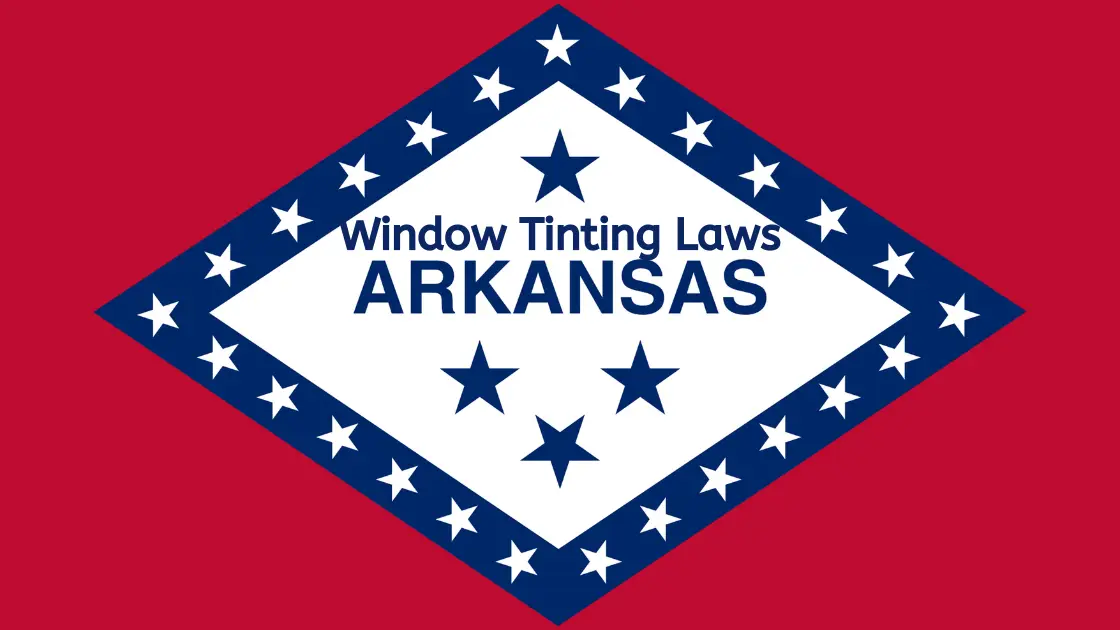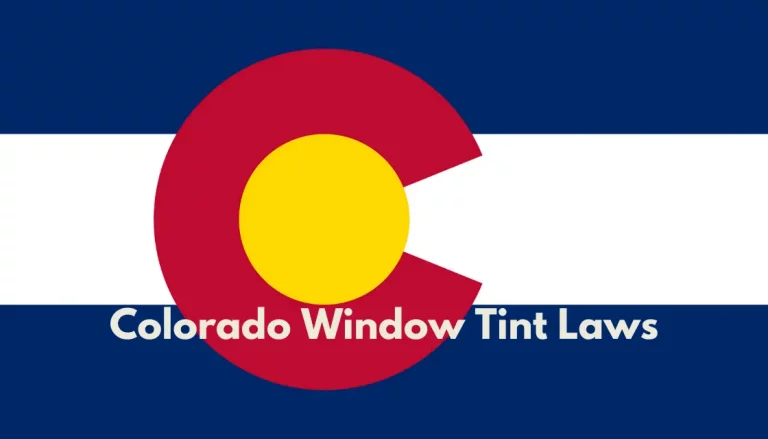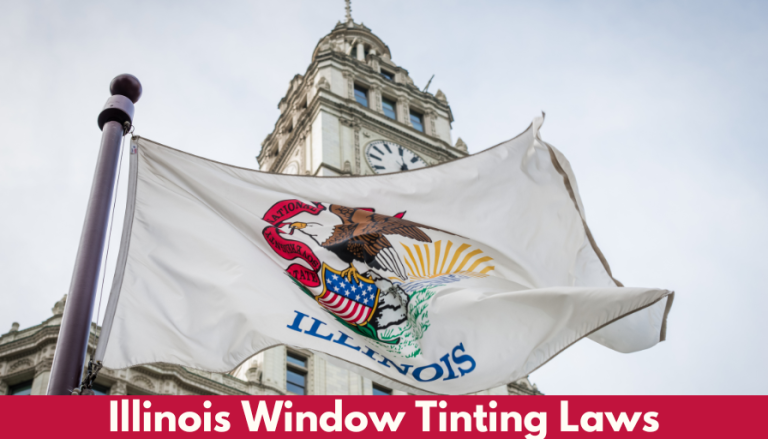Arkansas Window Tinting Laws: Stay Legal & Safe on the Road
If you’re cruising through the Natural State, you’ll want to know that Arkansas window tinting laws are as unique as the state’s diverse landscapes. I’ve navigated the legal jargon to bring you a clear-cut guide to what’s allowed on your ride.
Understanding these regulations is crucial because they’re not just about style; they’re about staying on the right side of the law. Stick with me, and I’ll make sure you’re up to speed on the latest requirements for window tinting in Arkansas.
Understanding Arkansas Window Tinting Laws
When I’m navigating the legal landscape of window tinting in Arkansas, knowing the specifics not only ensures compliance but also informs me about what’s permissible for my vehicle’s windows. Arkansas’s standards for window tinting are exact, and they vary depending on the window in question.
The Latest Requirements for Window Tinting in Arkansas
Keeping up with the latest requirements for window tinting in Arkansas is vital for any driver looking to add some shade to their vehicle. Arkansas’s window tint law was first enacted in 1993, and it has evolved to address safety concerns and aesthetic preferences of drivers in the state.
One of the primary measurements used in these regulations is the Visible Light Transmission (VLT) percentage. This defines the amount of visible light that can pass through both the film and the window.
As of my last update, the Arkansas window tinting laws require that the tint on the front side windows must allow more than 25% of the light in. For the back side windows and rear windows, a minimum VLT of 10% is acceptable.
It’s important to note that these regulations are subject to change, so it’s essential to check the current laws before having any tint work done.
| Window Position | Minimum VLT Percentage |
|---|---|
| Front Side Windows | 25% |
| Back Side Windows | 10% |
| Rear Window | 10% |
Reflective tint is a popular choice for its ability to reflect sunlight away from the vehicle, reducing the need for air conditioning. However, in Arkansas, the reflection on the tint should not be more than 25% reflective. This helps to prevent driver distractions and maintains the aesthetic uniformity of vehicles on the road.
Choosing the right tint for your car involves more than just complying with VLT percentages and reflection restrictions. Drivers are also advised to avoid the installation of any tint with colors that are considered prohibited. As of my last check, tints with colors like red, amber, and blue are typically not allowed.
Investing in a quality tint installation not only ensures compliance with the law but can also provide benefits like UV protection, reduced glare, and improved privacy. However, making sure the tint adheres to all current Arkansas specifications is the driver’s responsibility. Always double-check any information received with the latest state guidelines or consult with a professional installer who keeps pace with any updates to the law.
VLT Percentage
One critical term I always keep in mind is Visible Light Transmission (VLT). It refers to the percentage of light that a tint film allows to pass through your car windows. Arkansas law stipulates different VLT percentages for different types of vehicles.
The higher the VLT, the more light is allowed through; hence, a 70% tint allows much more light to pass than a 5% tint.
Here’s a quick breakdown:
- For sedans: More than 25% VLT
- For SUVs and vans: More than 25% VLT
Additional Tinting Rules
Aside from VLT percentages, there are other regulations to consider:
- Tint reflection: Arkansas laws permit a certain level of reflection with window tints to reduce glare and heat generated by direct sunlight.
- Restricted colors: The law in Arkansas prohibits certain colors for window tint, so it’s essential to avoid those when selecting a tint film.
To verify compliance, tint manufacturers in Arkansas are required to certify the film they sell in the state. As a driver, when I have my windows tinted, I must ensure the sticker identifying legal certification is displayed between the film and glass on the driver’s side window.
| Vehicle Type | Front Side Windows | Back Side Windows | Rear Window |
|---|---|---|---|
| Sedans | More than 25% VLT | Min 25% VLT | Min 25% VLT |
| SUVs/Vans | More than 25% VLT | Any darkness | Any darkness |
Understanding these nuances in the Arkansas window tinting laws empowers me to make informed decisions for my vehicle’s customization ensuring both style and legality go hand in hand.
The Importance of Knowing the Regulations

As someone who takes vehicle customization seriously, I’m well aware that staying informed about window tinting regulations is crucial. Knowing the laws not only prevents potential run-ins with law enforcement but also avoids costly fines and the hassle of removing non-compliant tints. I’ve learned that in Arkansas, as with many states, these regulations aren’t just about aesthetics but also about safety.
Firstly, proper visibility is paramount. Tinting windows without regard to VLT limits can severely affect a driver’s vision, particularly under low-light conditions or while driving at night.
This compromises not only the driver’s safety but also that of other road users. It’s essential that I understand these VLT percentage requirements to ensure that my vehicle is safe to operate at all times.
Additionally, being current with tinting laws helps me make better investment decisions. Imagine spending a considerable amount of money on a tint that needs to be stripped because it doesn’t meet the necessary certification or sticker display requirements. By staying informed, I make sure that my money goes into products and services that won’t have to be redone.
What’s more, knowing the state-specific nuances like reflection restrictions and prohibited colors guards against unintentional lawbreaking. For instance, I was surprised to learn that Arkansas law prohibits red, amber, and yellow tints. Such details are easy to miss and could inadvertently lead to legal issues.
Staying abreast of these regulations isn’t just about compliance. It’s about taking ownership of the car customization process and ensuring that my choices align with state laws.
With a clear understanding of Arkansas’s window tinting laws, I can customize my vehicle’s windows, knowing that I’m within my legal rights and maintaining my vehicle’s safety and integrity.
How to Stay on the Right Side of the Law
Knowing the ins and outs of Arkansas’s window tinting regulations is key to ensuring you don’t unintentionally break the law. I’d like to share a few critical steps you can take to make sure your vehicle’s window tint meets the state’s legal standards.
First and foremost, familiarize yourself with the Visible Light Transmission (VLT) percentage regulations. The state of Arkansas requires a certain amount of light to be allowed through your car windows. The front side windows must let in more than 25% of the light, and the back side windows must let in more than 10%. Sticking to these guidelines is crucial.
Next, you’ll want to understand the rules regarding tint reflection. In Arkansas, tint materials that reflect are regulated because high reflection can cause visibility issues for both the driver and other road users. For both front and back windows, a reflective tint can’t reflect more than 25% of light.
Also, be aware of the prohibited tint colors in Arkansas. You can’t go wrong if you avoid red, amber, and yellow since these are reserved for emergency vehicles and can confuse other drivers, potentially causing safety risks.
When choosing a window tint installer, look for reputable professionals who adhere to Arkansas’s laws. They’ll provide a certificate indicating compliance with state regulations which you should keep in your vehicle at all times. This can be extremely helpful if you ever need to prove your tint is legal.
Remain vigilant about maintaining your vehicle’s tint. Scratches, bubbles, and peeling can not only affect visibility but can also make once legal tint fall out of compliance with state standards. Regular checks are a simple yet effective way to uphold safety and legality.
It’s crucial to keep in mind that the laws may change. Staying updated by checking with the Arkansas Department of Motor Vehicles or consulting legal professionals can save you from future headaches and fines. Keeping abreast of any updates secures your investment in quality window tinting and reinforces your commitment to road safety.
Conclusion
Staying abreast of Arkansas’s window tinting laws is essential for both your safety and legal peace of mind. I’ve walked you through the nuances of VLT percentages, tint reflection, and the colors that could land you in hot water if used. Remember, choosing a reputable installer can make all the difference in maintaining compliance. It’s not just about the sleek look—your commitment to road safety and adherence to the law is paramount. Keep your ear to the ground for any legal updates and ensure your tint meets the latest standards. Drive confidently knowing you’re within the bounds of the law.
Frequently Asked Questions
What are the legal VLT limits for window tint in Arkansas?
The legal Visible Light Transmission (VLT) limit for window tinting in Arkansas is 25% for the front side windows and 10% for the back side and rear windows.
Are there any restrictions on tint reflection for car windows in Arkansas?
Yes, in Arkansas, window tint reflection is restricted. Tint on the front and back side windows must not be more than 25% reflective.
Are any tint colors prohibited in Arkansas?
Colors red, amber, and yellow are prohibited for window tinting in Arkansas.
How can I ensure my window tinting is legally compliant in Arkansas?
To ensure legal compliance, familiarize yourself with Arkansas’s VLT percentage regulations, tint reflection rules, and prohibited colors. Choose a reputable installer who understands the latest laws and maintains the tint regularly.
Why is it important to choose a reputable window tint installer in Arkansas?
A reputable window tint installer will ensure that your vehicle complies with Arkansas regulations, using appropriate materials and installation techniques, and will stay updated on any changes in the law.
What happens if I don’t comply with the window tinting laws in Arkansas?
Non-compliance with window tinting laws in Arkansas can lead to legal penalties, including fines and requirements to remove the non-compliant tint.
How often do window tinting laws change in Arkansas?
Window tinting laws can change, although not frequently. It’s essential to stay updated on the current regulations, which can be done by checking with local DMV or law enforcement agencies or consulting with reputable window tinting professionals.







